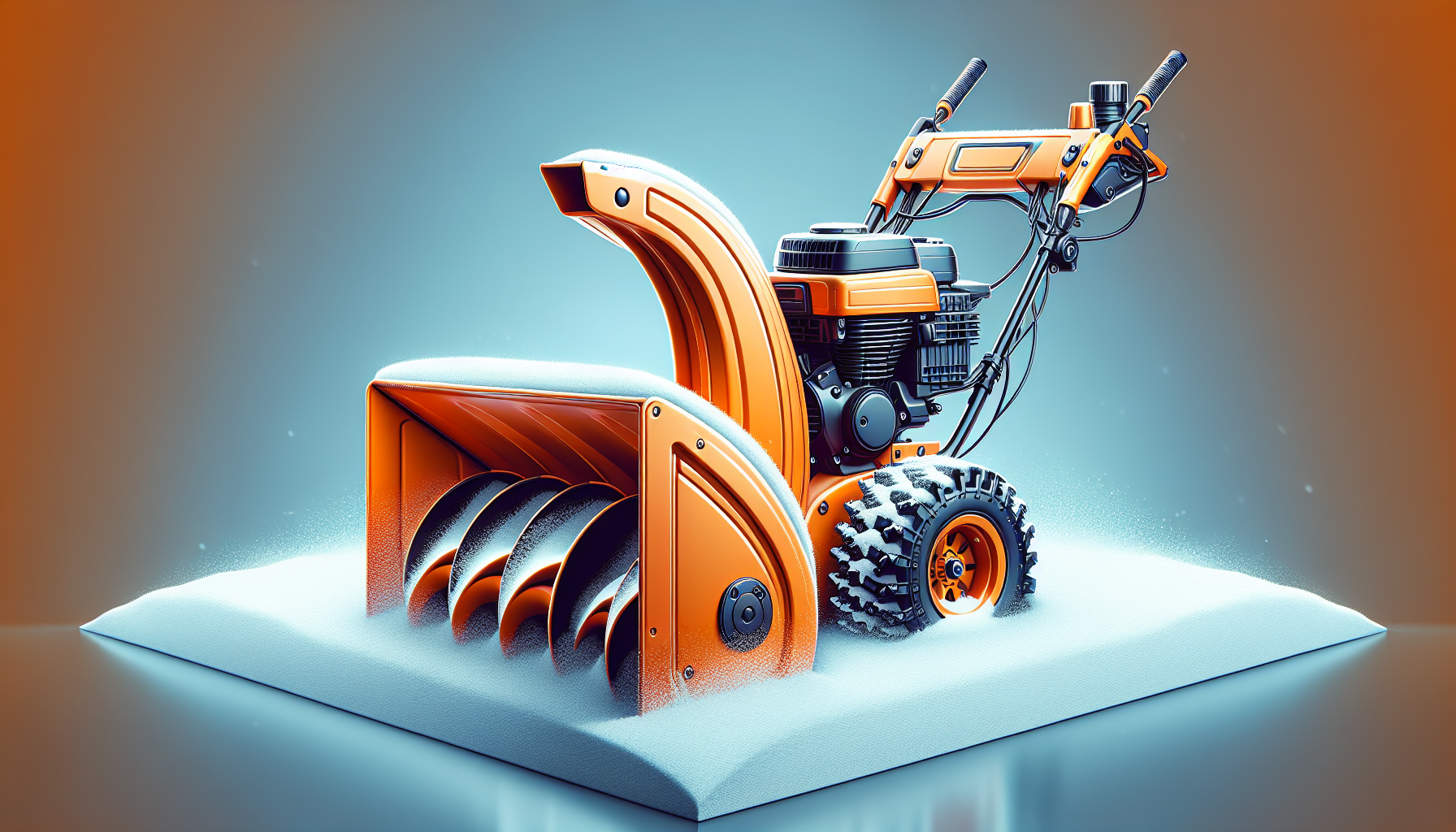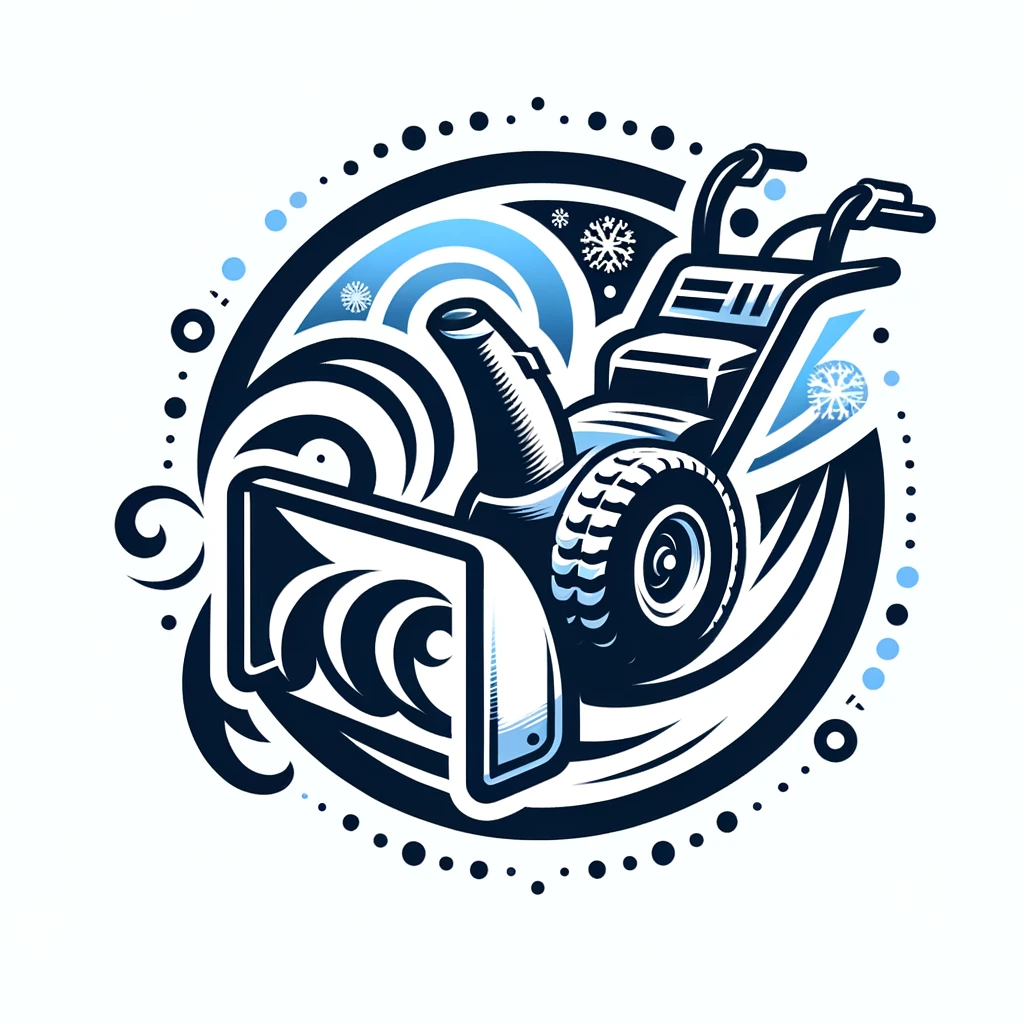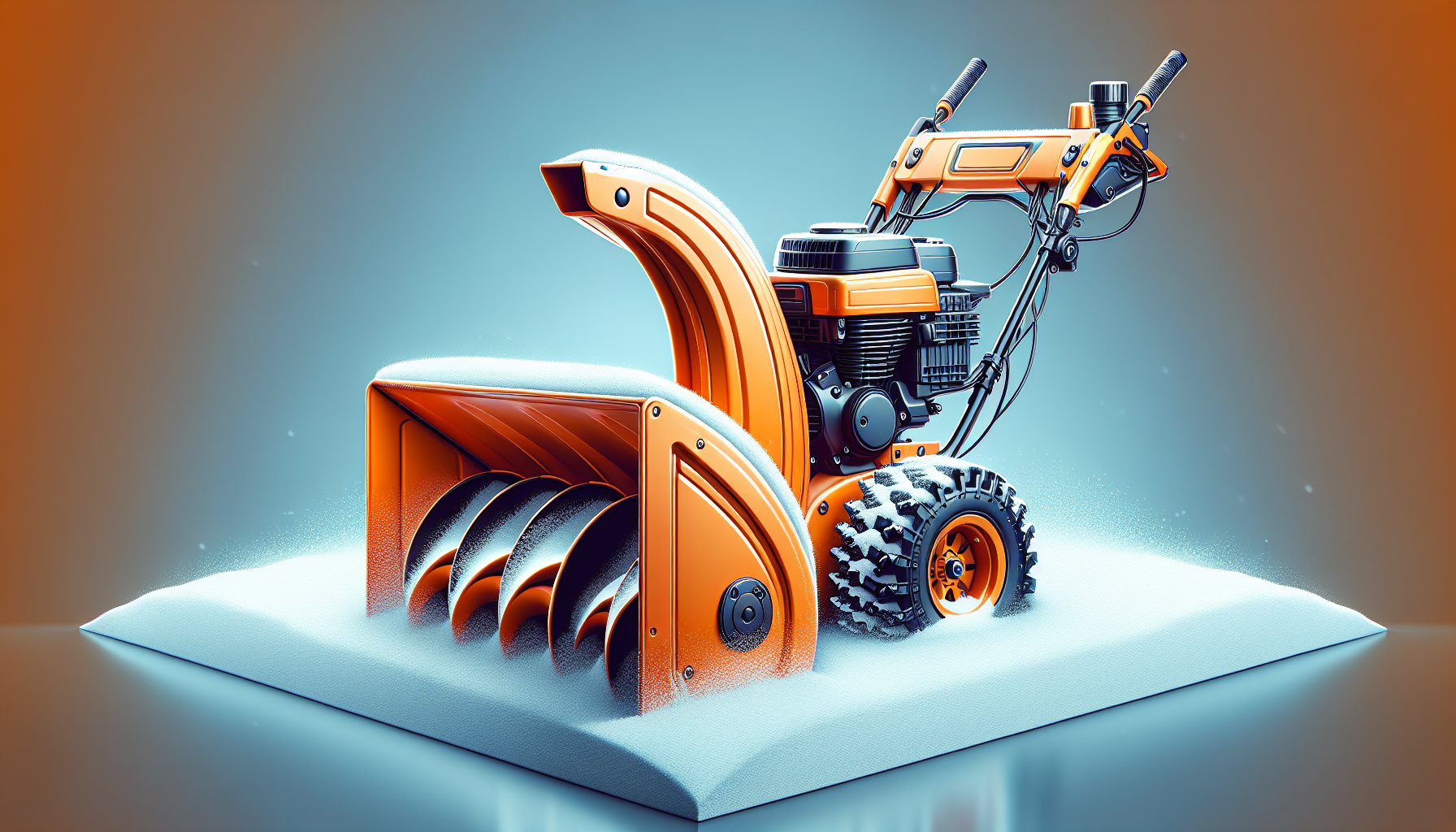Looking for the perfect snowblower but not sure which one to choose? Look no further! In this article, you will discover the ultimate guide to finding the best snowblower for your needs. From powerful engines and easy maneuverability to durability and budget-friendly options, we’ve got you covered. Say goodbye to the hassle of shoveling by finding the perfect snowblower that will make winter maintenance a breeze. So, grab a cup of hot cocoa and get ready to explore the world of snowblowers to find the one that’s perfect for you. When it comes to choosing the best snowblower for your needs, there are a variety of factors to consider. Snowblowers come in different types, power sources, snow-throwing capacities, engine powers, start-up methods, and feature various ease of use and maneuverability options. Additionally, the maintenance and durability, price range, and user reviews and recommendations are all important aspects to take into account. In this comprehensive article, we will explore each of these categories to help you determine the best snowblower to buy for your specific requirements.

Types of Snowblowers
Single-stage Snowblowers
Single-stage snowblowers are perfect for light snowfall or smaller areas. They are typically compact and lightweight, making them easy to maneuver. These snowblowers feature an auger that not only picks up the snow but also throws it out of the chute, clearing the area as you go. However, single-stage snowblowers are not as powerful in handling large amounts of heavy or wet snow.
Two-stage Snowblowers
Two-stage snowblowers are the most popular choice for homeowners. They are more powerful than single-stage snowblowers, making them suitable for heavier snowfall and larger areas. These snowblowers use an auger to pick up the snow and a separate impeller to throw the snow out of the chute. Two-stage snowblowers are known for their ability to handle various snow conditions and distances.
Three-stage Snowblowers
Three-stage snowblowers are the heavyweights in the snowblower market. They have an additional accelerator that aids in breaking up the snow and ice, making them ideal for extremely heavy or icy snow conditions. These snowblowers offer enhanced throwing distance and clearing width, allowing you to tackle large areas efficiently. However, they are generally more expensive and larger in size, so they may not be suitable for everyone’s needs.
Power Source
Gas-powered Snowblowers
Gas-powered snowblowers are a popular choice due to their mobility and long run time. These snowblowers are typically more powerful than electric models, allowing them to handle larger snowfall amounts and heavy or wet snow. However, they require regular maintenance, including oil changes and fuel refills, and are usually noisier and emit exhaust fumes.
Electric Snowblowers
Electric snowblowers are available in corded and cordless models. Corded electric snowblowers offer continuous power as long as they are connected to a power source, while cordless electric snowblowers rely on rechargeable batteries. They are generally quieter, easier to start, and require less maintenance compared to gas-powered snowblowers. However, their power and run time might be limited, making them more suitable for smaller areas with light to moderate snowfall.
Snow-Throwing Capacity
Clearing Width
The clearing width of a snowblower refers to the width of the path the machine can clear in a single pass. A wider clearing width means you can clear a larger area more quickly. Single-stage snowblowers typically have a clearing width ranging from 18 to 22 inches, while two-stage and three-stage snowblowers offer wider widths ranging from 24 to 45 inches.
Clearing Depth
The clearing depth represents the maximum height of snow a snowblower can effectively handle. It is important to choose a snowblower with a clearing depth that matches the typical snowfall in your area. Single-stage snowblowers generally handle snow depths up to 12 inches, while two-stage and three-stage snowblowers can handle deeper snow accumulations, ranging from 20 to 23 inches.
Throwing Distance
The throwing distance indicates how far a snowblower can propel the cleared snow. This is an important consideration if you need to move the snow a significant distance away from your cleared area. Two-stage and three-stage snowblowers typically have a longer throwing distance compared to single-stage snowblowers. Be sure to choose a snowblower that can throw the snow far enough to avoid having it pile up in areas you’ve already cleared.
Engine Power
Horsepower
The horsepower (HP) of a snowblower’s engine determines its overall performance and ability to handle different snow conditions. Higher horsepower usually indicates a more powerful and efficient snowblower. Single-stage snowblowers typically have engines ranging from 4 to 8 HP, while two-stage and three-stage snowblowers often have engines with higher HP, ranging from 6 to 14 HP.
Engine Size
The engine size is another factor to consider when evaluating the power of a snowblower. Typically measured in cubic centimeters (cc), a larger engine size usually results in more power and better performance. Single-stage snowblowers typically have engine sizes ranging from 150 to 250 cc, while two-stage and three-stage snowblowers have larger engine sizes, ranging from 200 to 420 cc.
Start-up Method
Pull Cord Start
Pull cord start is a traditional method of starting a snowblower. It requires manually pulling a cord to start the engine. While this method is reliable, it can be challenging for individuals with limited strength or mobility. However, some newer models come with added features like “easy start” systems that reduce the effort required to pull the cord.
Electric Start
Electric start is a more convenient method of starting a snowblower. It involves simply pushing a button or turning a key to start the engine. Electric start eliminates the need for manual pulling and is generally easier for most users. However, keep in mind that electric start requires access to an electrical outlet or a charged battery in cordless models.
Snow Blower Features
Auger Type
The auger is a key component of a snowblower, responsible for picking up and moving the snow. Different snowblowers have different auger designs, including steel augers, rubber augers, and serrated augers. Steel augers are durable and can handle various snow conditions, while rubber augers are typically quieter and less likely to damage surfaces like gravel driveways. Serrated augers offer enhanced performance in breaking up ice and compacted snow.
Speed Control
Speed control allows you to adjust the pace at which the snowblower moves forward. Having variable speed options can be beneficial in different snow conditions, allowing you to slow down for heavier or deeper snow and speed up for lighter snow. Look for snowblowers with easy-to-use speed controls that offer a range of options to suit your preferences and the specific snow conditions you typically encounter.
Directional Control
Directional control determines how the snow is thrown out of the snowblower’s chute. Most snowblowers allow for 180-degree rotation, while others offer 200-degree or even 360-degree rotation, providing better control over where the snow is discharged. Consider the flexibility and precision of the directional control system, as it will determine how effectively you can direct the snow away from your cleared area.
Headlight
A headlight is a useful feature for snowblowing during early morning or evening hours when visibility can be limited. It illuminates the path in front of you, allowing you to see any obstacles or hazards in your way. If you anticipate using your snowblower in low light conditions, ensure that the model you choose is equipped with a bright and reliable headlight.
Heated Handles
Heated handles can be a game-changer when it comes to comfort during extended snowblowing sessions. They help prevent your hands from getting cold and numb, making the task more enjoyable. Look for snowblowers that have heated handles as an additional feature, particularly if you live in an area with extremely cold winters.
Ease of Use and Maneuverability
Weight and Size
The weight and size of a snowblower can significantly affect its ease of use and maneuverability. Heavier snowblowers are generally more stable, but they can be harder to push and maneuver. Lighter snowblowers are easier to handle and navigate but may have limitations in power and clearing capacity. Consider your physical capabilities and the size of the area you need to clear when choosing the right weight and size for you.
Wheel or Track Drive
Snowblowers typically have either wheel drive or track drive systems. Wheel drive snowblowers are more commonly available and offer good traction on flat surfaces, making them suitable for clearing driveways and sidewalks. Track drive snowblowers, on the other hand, provide better traction and maneuverability, making them ideal for uneven terrain and steep slopes. Choose the drive system that matches the specific terrain and conditions of your property.
Steering
Steering capabilities can significantly impact the ease of use and maneuverability of a snowblower. Some models come with features like power steering, which allows for easier turning and maneuvering with minimal effort. Others may have adjustable handles or quick-turn chute controls for better control and flexibility. Consider your comfort and confidence in handling the particular steering system when making your decision.
Maintenance and Durability
Construction Material
The construction material of a snowblower affects both its durability and weight. Look for snowblowers made with high-quality materials, such as sturdy metal components and durable plastic parts. These materials can withstand the rigors of snowblowing and have a longer lifespan. Additionally, consider the weight of the snowblower, as a lighter machine may be easier to transport and store.
Warranty
A reliable warranty is an essential consideration when purchasing a snowblower. A longer and more comprehensive warranty can provide you with peace of mind, knowing that you are protected against any potential defects or issues. Check the warranty coverage for different components, such as the engine and auger, and understand any exclusions or conditions that may affect the warranty’s validity.
Price Range
Budget-friendly Options
If you are looking for a snowblower on a budget, there are many options available. Single-stage snowblowers are generally more affordable, making them a popular choice for those with smaller areas to clear. Additionally, electric snowblowers, especially corded models, are often more budget-friendly than gas-powered counterparts.
Mid-range Options
Mid-range snowblowers offer a good balance between price and performance. Two-stage snowblowers with moderate engine power and clearing capacities are typically found in this price range. These snowblowers are suitable for most homeowners who experience moderate to heavy snowfall.
Premium Options
For those looking for top-of-the-line performance and features, premium snowblowers are the way to go. Three-stage snowblowers with powerful engines, wide clearing widths, and enhanced throwing distances can be found in this category. Premium snowblowers are best suited for homeowners with large areas to clear or those who frequently face heavy or icy snow conditions.
User Reviews and Recommendations
Consumer Reports
Consumer Reports is a trusted resource for unbiased reviews and ratings of various products, including snowblowers. Their comprehensive testing and evaluation process can provide valuable insights into the performance, reliability, and customer satisfaction of different snowblower models. Checking their recommendations and ratings can help you make an informed decision.
Online Reviews
Online reviews from real customers can provide valuable firsthand experiences and opinions about specific snowblower models. Reading through a variety of reviews on retailer websites and independent review platforms can give you a better understanding of potential strengths and weaknesses of the snowblowers you are considering.
Personal Recommendations
Don’t underestimate the power of personal recommendations from friends, family, or neighbors who have already used snowblowers. They can provide valuable insights about their experiences with specific models, including any issues or standout features they encountered. Seek advice from those you trust to gather a range of opinions before making your final decision.
In conclusion, when deciding on the best snowblower to buy, it is crucial to consider factors such as the type of snowblower, power source, snow-throwing capacity, engine power, start-up method, snow blower features, ease of use and maneuverability, maintenance and durability, price range, and user reviews and recommendations. By carefully evaluating each category and weighing your specific needs and preferences, you can confidently select the perfect snowblower to efficiently and effectively tackle the winter snowfall.


